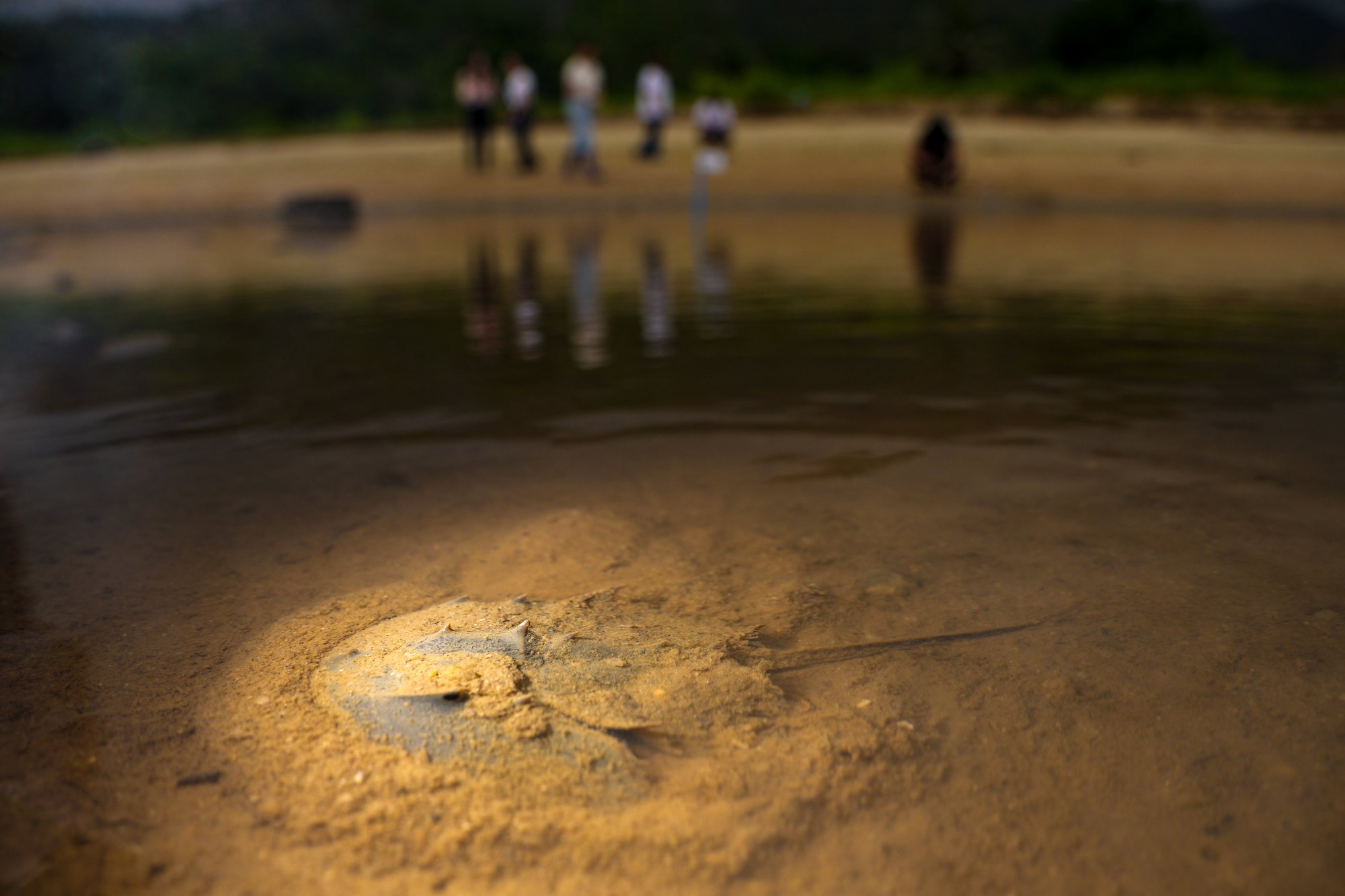Theme park’s conservation foundation marks International Horseshoe Crab Day with trial project to regularly monitor animals’ natural habitats. — SCMP
Hong Kong researchers are turning to drones and artificial intelligence (AI) software technology to protect the local population of endangered horseshoe crabs as part of a trial project from Ocean Park.
The Ocean Park Conservation Foundation announced the news on Thursday, which is International Horseshoe Crab Day, saying on-site testing had started earlier this month at Ha Pak Nai in the northwestern New Territories.
“Over the years, Ocean Park has been using its technology to enrich wildlife preservation for endangered species. We believe that by using AI technology, we can effectively and efficiently collect data on the number of local horseshoe crabs,” foundation director Howard Chuk Hau-chung said.
Professor Cheung Siu-gin of City University’s chemistry department said: “Horseshoe crabs are living fossils and have great evolutionary significance.”
Horseshoe crabs have a component in their blood that can be used to test for toxic substances and bacteria in chemicals used for vaccines, and played a vital role in healthcare, he said.
The International Union of Conservation Nature (IUCN) has declared tri-spine horseshoe crabs to be an endangered species and placed them on the organisation’s red list.
“There are now less than 10,000 juvenile horseshoe crabs remaining in Hong Kong,” Cheung said. “The population has decreased by 90% over the years, and we don’t see any signs of recovery as of recently.”
The academic said the installation of sea walls along local coastal shores could have stripped away areas of mangroves and mudflats that served as the animals’ natural habitat.
He added that local fishermen about 40 to 50 years ago would have been able to confirm that both elements were common to Hong Kong’s coastal shores at the time.
Under the trial scheme, researchers will monitor mudflat areas once or twice a month when tides go out in the late afternoon, sending out three to five drones to take photos of the wetlands.
The images are then taken to a laboratory, where AI software that focuses on small object detection can identify the number of horseshoe crabs in each photo.
Foundation director Chuk said: “Having the correct population figures and data ensures lawmakers can make effective policies to preserve the population of these species.”
Chen Xi, a research assistant professor at the department of mechanical and automation engineering of the Chinese University of Hong Kong (CUHK), who is also part of the project, said the trial could help to save time and manpower during the data collection process.
“What used to be an hour of collecting data by eye and counting the crabs one by one can easily be done in a few minutes with unmanned drones,” he said.
Chen added that the AI system could accurately differentiate horseshoe crabs from other small objects in the area.
“It’s difficult to do so with the human eye because the colour of the crabs blend in with its surroundings,” he said.

Judy Wan Hon-chi, the foundation’s conservation and community partnerships manager, said the first on-site test last month was a promising start for preservation efforts.
“After today, we will move forward with our partnerships to work on overcoming factors such as tide patterns, the amount of sunlight and our small data set,” she said.
“We only saw a few crabs (on June 6) at our site testing due to poor sunlight and high tides.”
CUHK’s Chen said it could take up to two years before the data was refined and an AI model was fully developed, followed by a full project rollout several years later, as gathering enough data to ensure the algorithm was accurate would take time.
The academic also warned against an over-reliance on AI and said the public could help protect horseshoe crabs and biodiversity by taking part in beach cleans.
“AI can still make mistakes, it can only replace us in high-risk tasks and is only responsible for making the data collection process less tedious,” he said.
A team of specialists under the IUCN previously declared June 20 as International Horseshoe Crab Day to help bolster collective conservation efforts. – South China Morning Post





